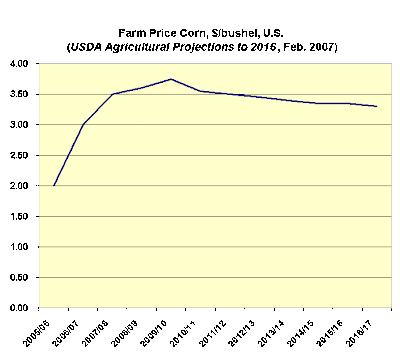How much damage do dumb, inconsiderate, wasteful acts of greenhouse gas emission do?

When someone roars away from a light to get to another red light a block away, how much damage is done by the excess greenhouse gases emitted compared to more climate-friendly driving? One polar bear? Two? One-tenth of a polar bear? We obviously need metrics to make clear what they are doing.
If someone causes the emission of greenhouse gases equivalent to one kilogram of CO
2, how much damage does that actually cause?
Well, it is obviously one thousandth the damage done by emission of one tonne CO
2e. But how much damage is that, in concrete terms any idiot can understand? One measure is in dollars and cents. What someone would pay for you
not to emit that kilo of CO
2e,? That's currently about $0.0017 according to the
Chicago Climate Exchange. If you purchased
carbon offsets to cover that kilo it would cost you about $0.015.
Leaving a 75-Watt bulb burning for ten hours when not needed uses 0.75 kWh of electricity, and generates about 0.45 kg of CO
2 (U.S. average o.6 kg CO
2 emitted per kWh electricity generated).
Burning one gallon of gasoline unnecessarily (getting one mile per gallon worse mileage than you could have gotten while driving 20 miles, or driving 20 or so extra miles) generates about 9 kg of CO
2.
But how much damage does that kilogram of CO2 really do?
This is a complex question of the
marginal damage caused by one
additional kilogram of CO
2. There are lots of studies that quantify this in terms of dollar costs, but none I can find put it in more emotive terms.
"Business as usual" or action to reduce emissions?
The Technical Summary of
IPCC Working Group 2 Fourth Assessment Report examined several scenarios of future greenhouse gas emissions and impacts on climate. The A scenarios are more like "business as usual", while the B scenarios incorporate more aggressive efforts to reduce emissions.

The predicted consequences of these various scenarios are shown in the graph below.
 How about this for a metric:
How about this for a metric: The thoughtless, lazy, selfish emission of excess greenhouse gases contributes to the difference between the A and the B scenario forecasts. By 2050 those drivers of Hummers (14 miles per gallon) would have caused about an extra 0.5 degree of global warming. That additional warming would be related to the release of about a billion extra tonnes of CO
2 into the air.
It would be that billion extra tonnes of emissions which could push us past the possible "tipping point" of 2 degrees warming above pre-industrial levels. Maybe we should attribute all the additional consequences to those extra kilograms emitted in haste, ignorance, or greed.
The difference between less than 2 degrees of global warming compared to pre-industrial levels and
more than 2 degrees is very significant. More than 2 degrees warming takes us into the range of very severe and much more unpredictable impacts of climate change. Those impacts still fall mainly on the poor, however.
(Note that
none of the scenarios used by the IPCC will keep us from breaking the 2 degree barrier. To reach equilibrium at less than 2 degrees over pre-industrial levels (less than about 450 ppm CO
2)
we must reduce global CO2 emissions absolutely to about one-half of 1990 levels.)
Putting a human face on global warming
The United Nations Development Programme Human Development Report 2007/2008--
Fighting climate change: Human Solidarity in a divided world, published last Tuesday, gives us some information we can use to evaluate impacts in human terms.
One finding is that some 360 million people may become climate change refugees over the next few decades. These are poor people who will be driven from their homes by floods, drought, disease, sea level increases, declines in crop productivity, etc. This doesn't count people who will have died due to starvation, disease or other causes directly connected to global warming.
360 million displaced / 1 billion tonnes excess emission: that's about a third of a ruined life per tonne, or the amount of excess CO
2 emitted by driving a car that gets 20 mile per gallon instead of 25 miles per gallon for 10,000 miles (less than one year's driving, for the average driver).
That 5 mpg penalty you are paying for aggressive driving, a bulbous car, or using a pick-up truck or SUV where a car would do--That's uprooting someone who has practically nothing and making sure they have absolutely nothing.


























